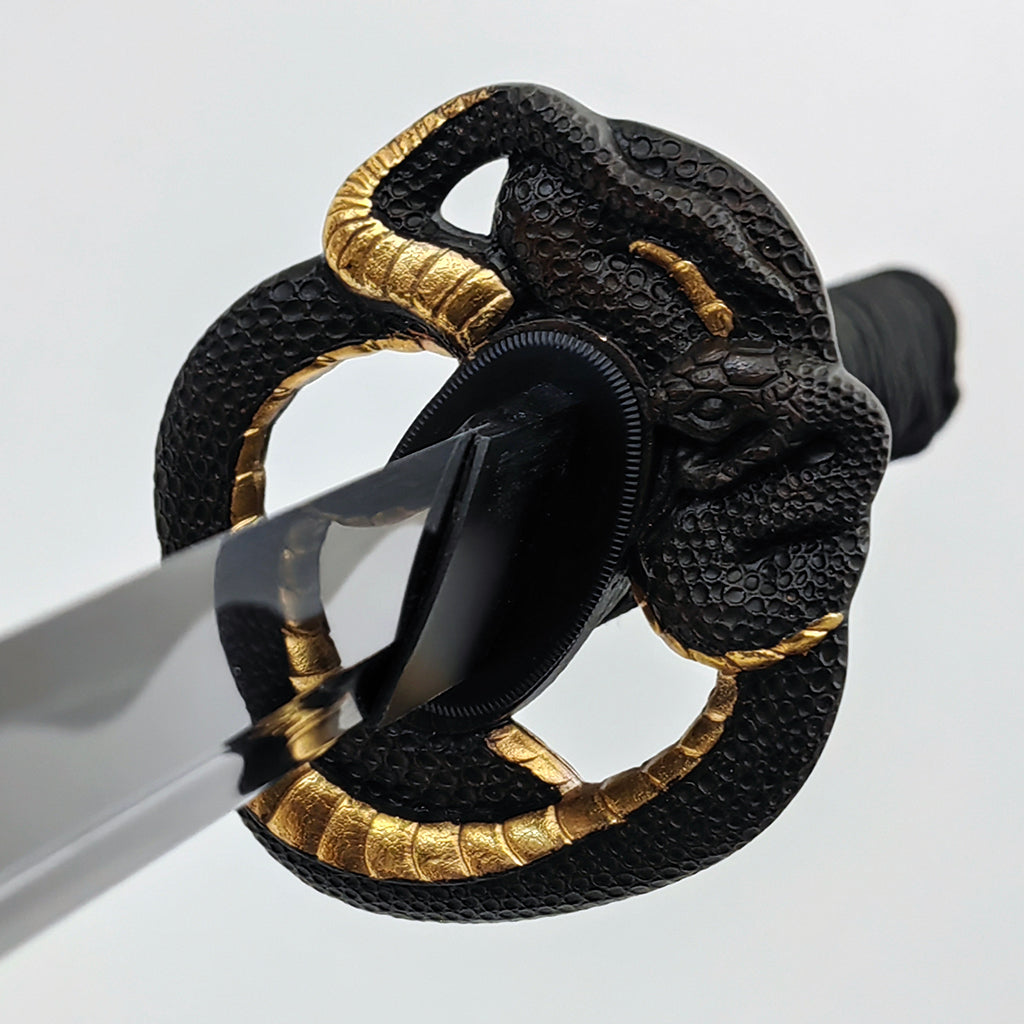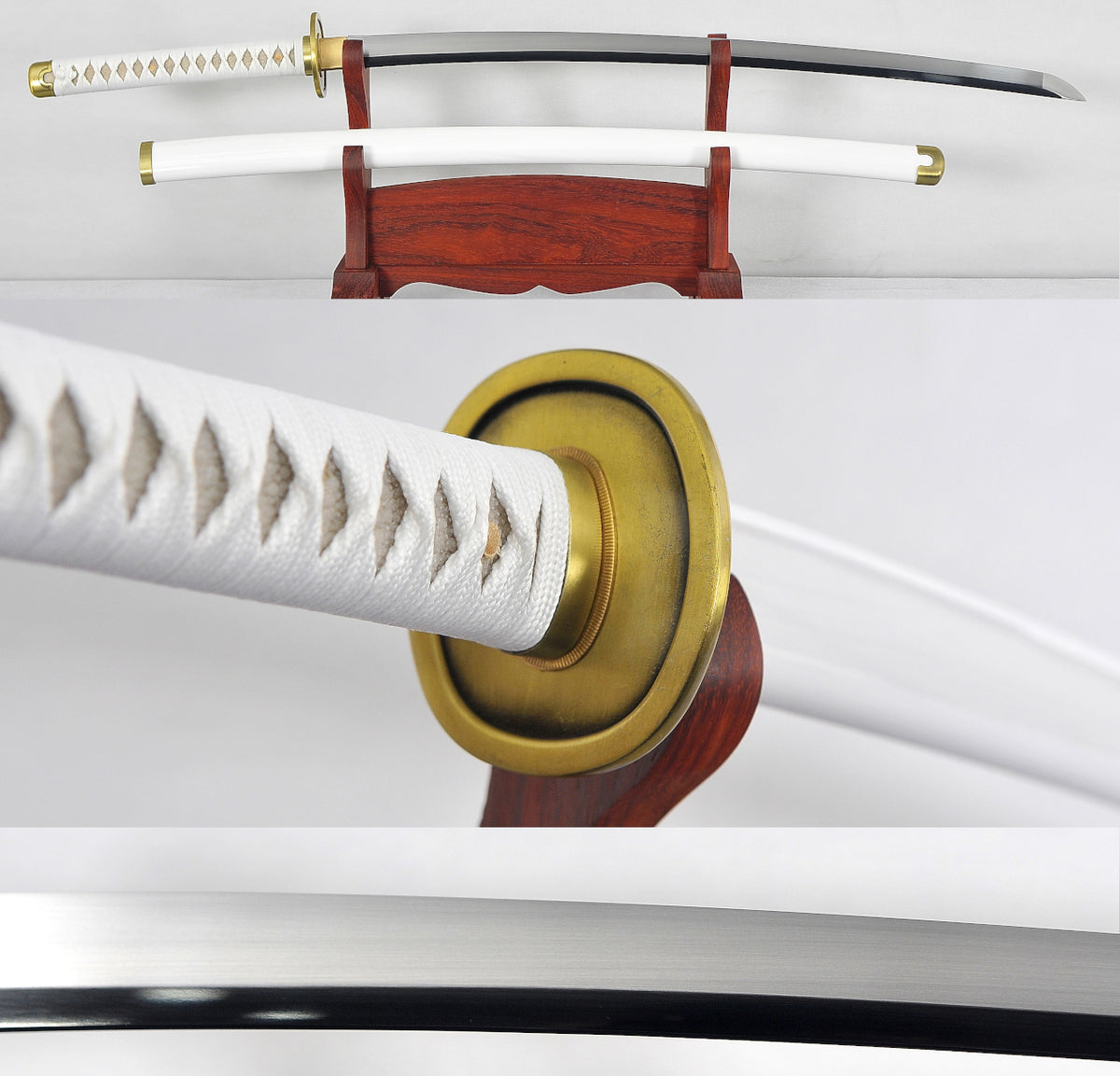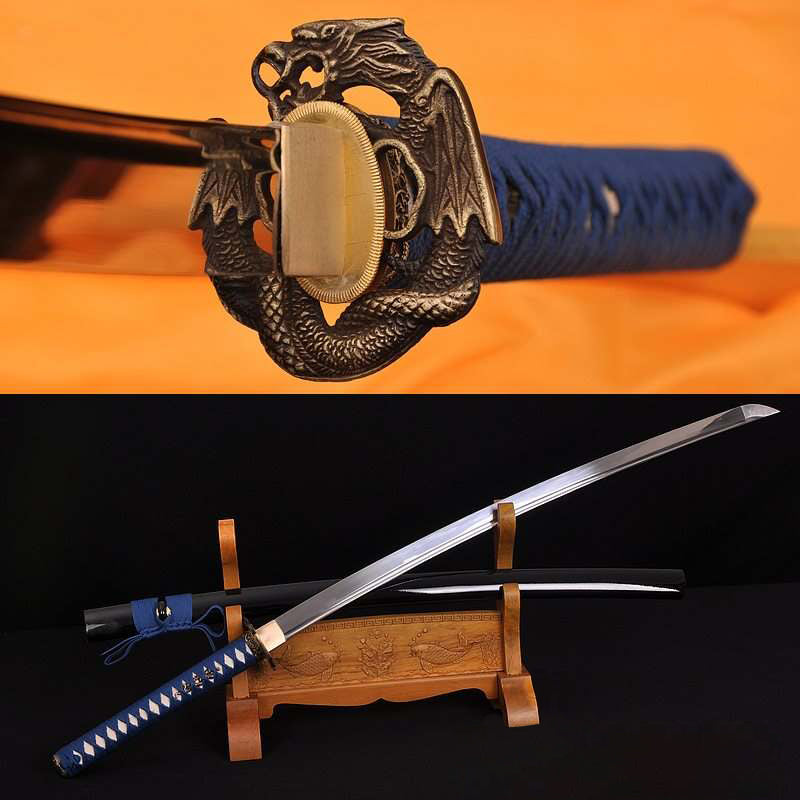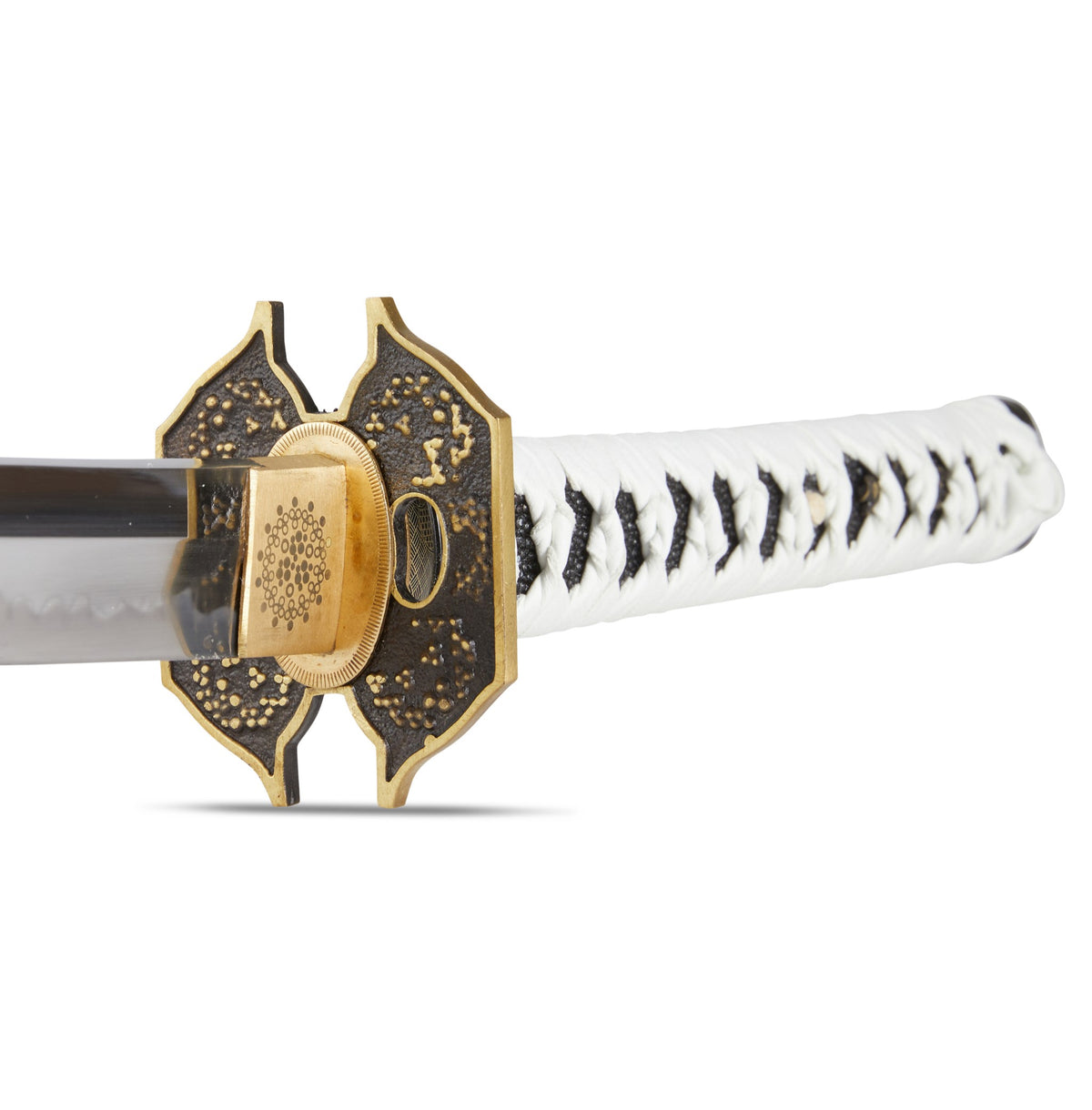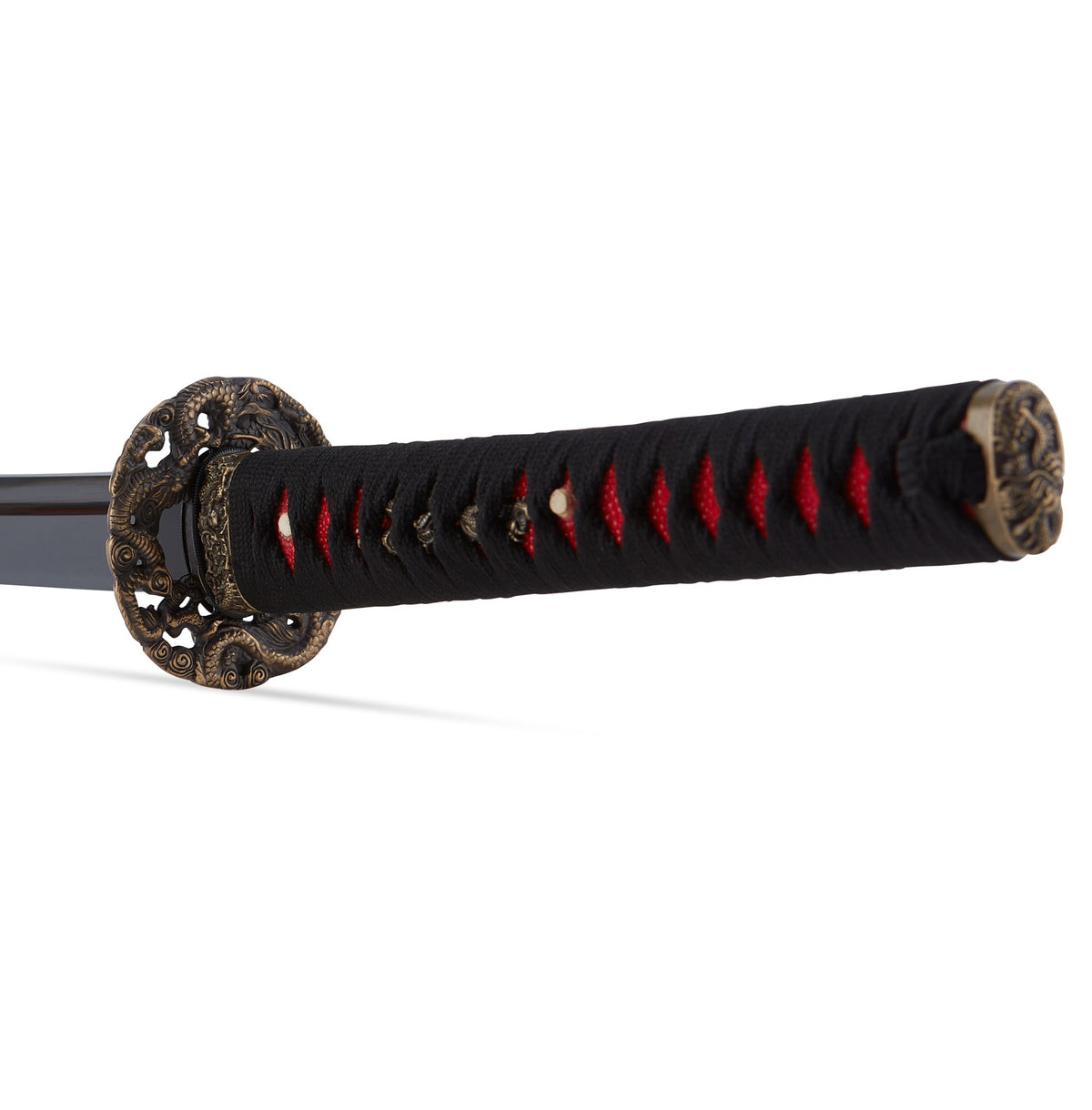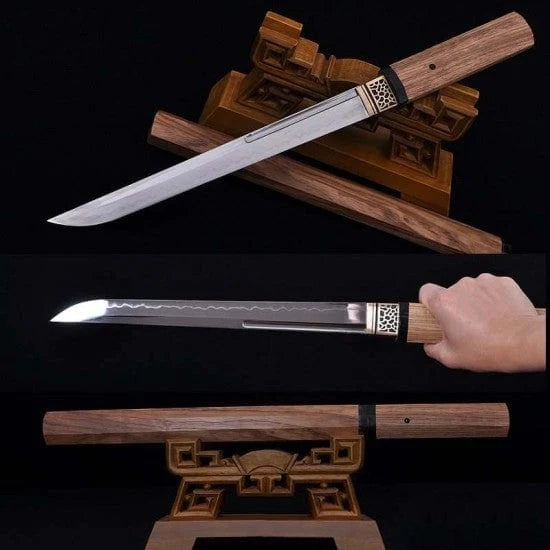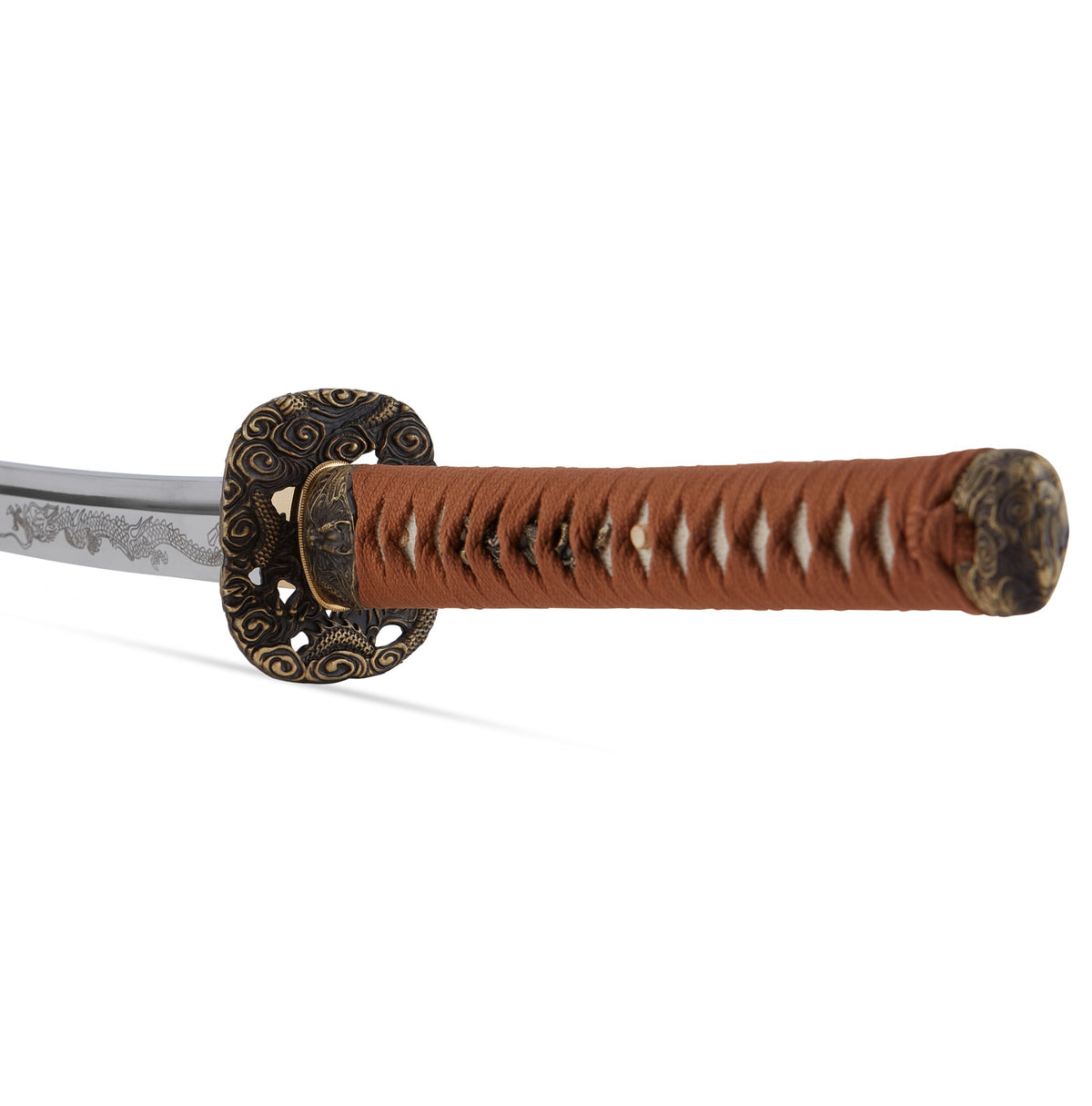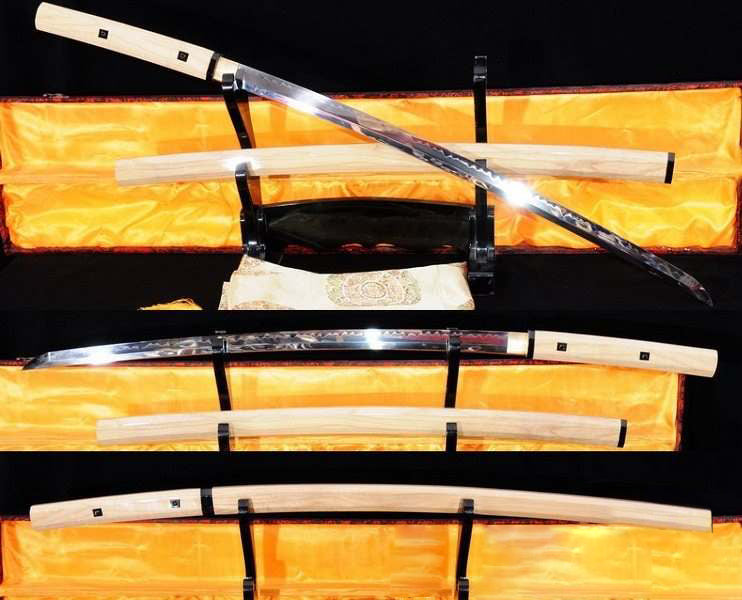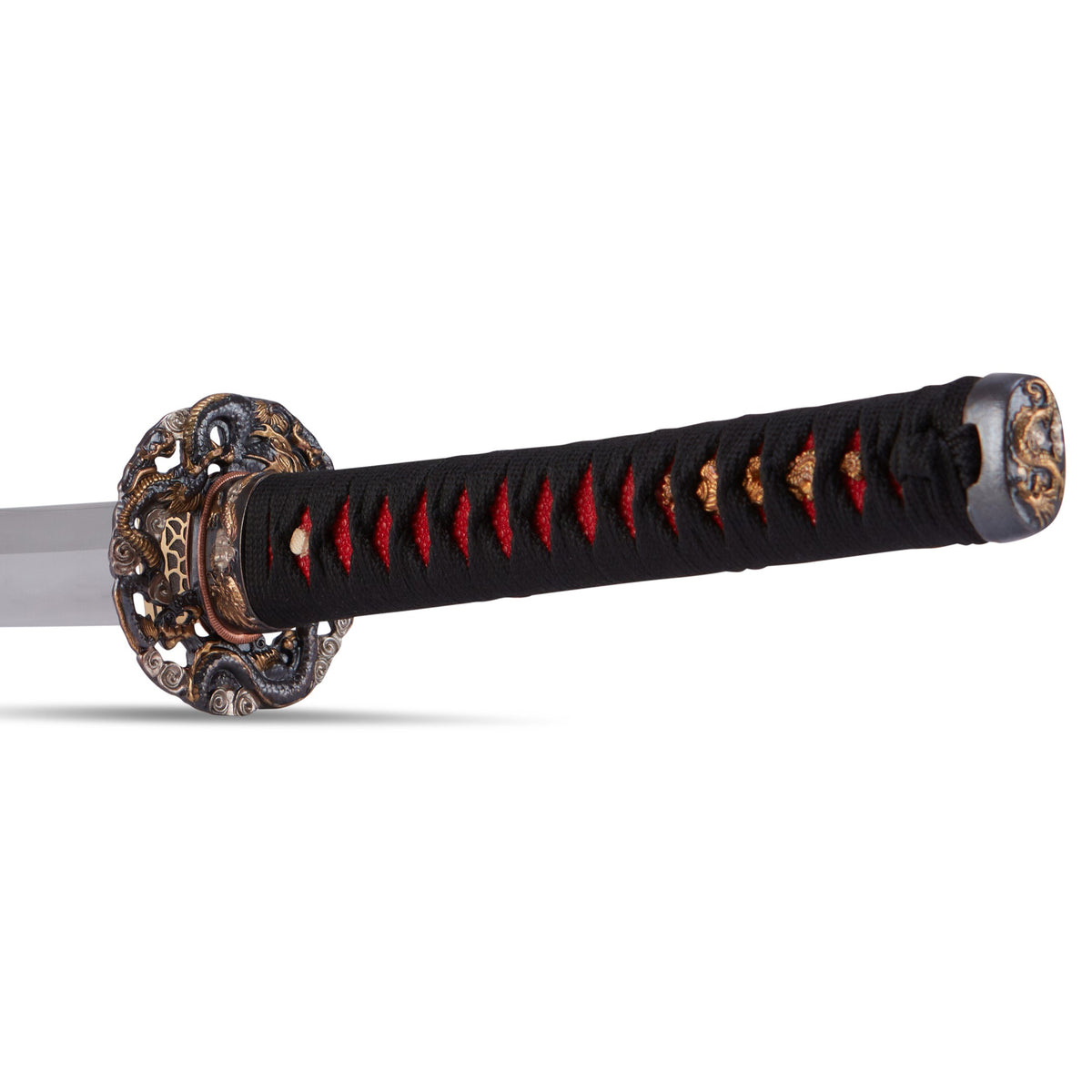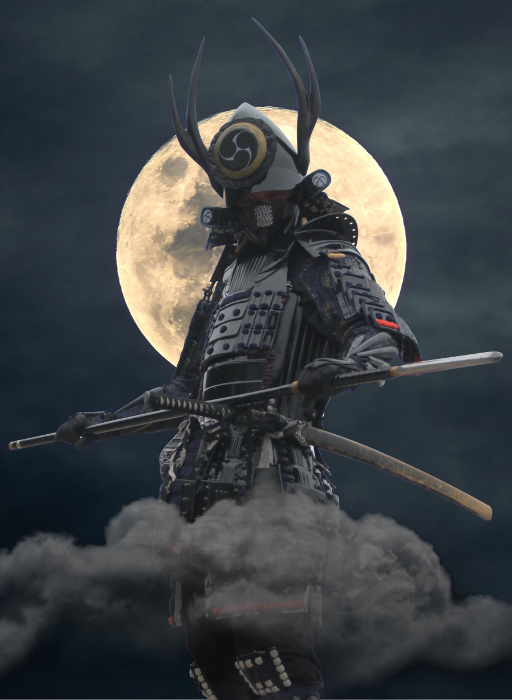Sword Anatomy: Parts Of A Katana

We think that understanding the parts of a katana is important aspect of sword ownership. With the diagram below, we review the sword parts.
A katana was one of two Samurai swords worn in feudal Japan and was a very important part of their training, lifestyle, and beliefs. Because these weapons had such important significance, their construction and forging required the utmost care. Besides the type of steel and the actual forging method, it is critical for any master smith and student of the sword to understand the parts of a katana and the sword’s anatomy. If you’re curious about this aspect of Japanese culture, read on here for a breakdown on the parts of a sword from the experts at Swords of Northshire.
The Blade
A battle ready katana is crafted to equal about two shaku or 60cm. They have a slight curve and a single sharpened edge. The most important parts of a katana blade include:
- Mune: This is the back edge of the blade
- Ji: The softest section of metal in the back of the blade
- Ha: The harder section of the metal at the front of the blade
- Kissaki: This is the slightly rounded tip of the blade
- Shinogi: The ridgeline of the blade (not the same as the hamon line).
The hamon line is a very important part of the sword blade that naturally forms through the differential tempering process the metal undergoes. This line separates the higher temperature and lower temperature metal tempering. Some sword makers can be identified by the unique hamon line they create in their swords.
You can learn more about blades and comparisons in our article: Katana vs Tachi.
The Tsuka

The tsuka is the handle of part of the katana and involves several intricately detailed components.
- Mekugi: These are wooden pegs that adhere the tang of the blade to the hilt.
- Samé: This is the material that covers the hilt of the sword. It’s traditionally ray skin.
- Ito: This is a silk wrap that covers the samé for better grip of the hilt.
- Menuki: A final, decorative charm that is wrapped into the ito. It covers the mekugi.
At the top of the tsuka, is a cap that ends the hilt called a kashira. On the other end of the blade lie the tsuba and the habaki. The tsuba is the guard of the sword and the habaki is the metal collar right underneath it that keeps the katana firmly sheathed.
The Saya
While not technically part of the katana sword’s anatomy, the saya is a scabbard. These can vary in material and style. Many prefer lacquered wood, others like horns or bone. The important thing about the saya is that it’s made to protect the blade part of the katana.
Katanas at Swords of Northshire
With this knowledge of katana parts, you’re much better equipped to start shopping for a high quality sword. At Swords of Northshire, we’re experts on Samurai swords like the Katana, Tachi, Wakizashi and Odachi sword design and forging. Reach out to us with any questions you may have about katana length, sword terminology, or Japanese weapons history. We love to discuss the parts of a sword, your special interests, and help you find the perfect katana for you.
Best Sellers
- Regular Price
- from $199.99
- Sale Price
- from $199.99
- Regular Price
-
- Unit Price
- per
- Regular Price
- from $299.00
- Sale Price
- from $299.00
- Regular Price
-
- Unit Price
- per
- Regular Price
- from $199.00
- Sale Price
- from $199.00
- Regular Price
-
$0.00
- Unit Price
- per
- Regular Price
- from $619.00
- Sale Price
- from $619.00
- Regular Price
-
- Unit Price
- per
- Regular Price
- from $319.00
- Sale Price
- from $319.00
- Regular Price
-
- Unit Price
- per
- Regular Price
- from $249.00
- Sale Price
- from $249.00
- Regular Price
-
- Unit Price
- per
- Regular Price
- from $339.00
- Sale Price
- from $339.00
- Regular Price
-
- Unit Price
- per
- Regular Price
- from $219.00
- Sale Price
- from $219.00
- Regular Price
-
- Unit Price
- per
- Regular Price
- from $364.00
- Sale Price
- from $364.00
- Regular Price
-
- Unit Price
- per
- Regular Price
- from $519.00
- Sale Price
- from $519.00
- Regular Price
-
- Unit Price
- per
